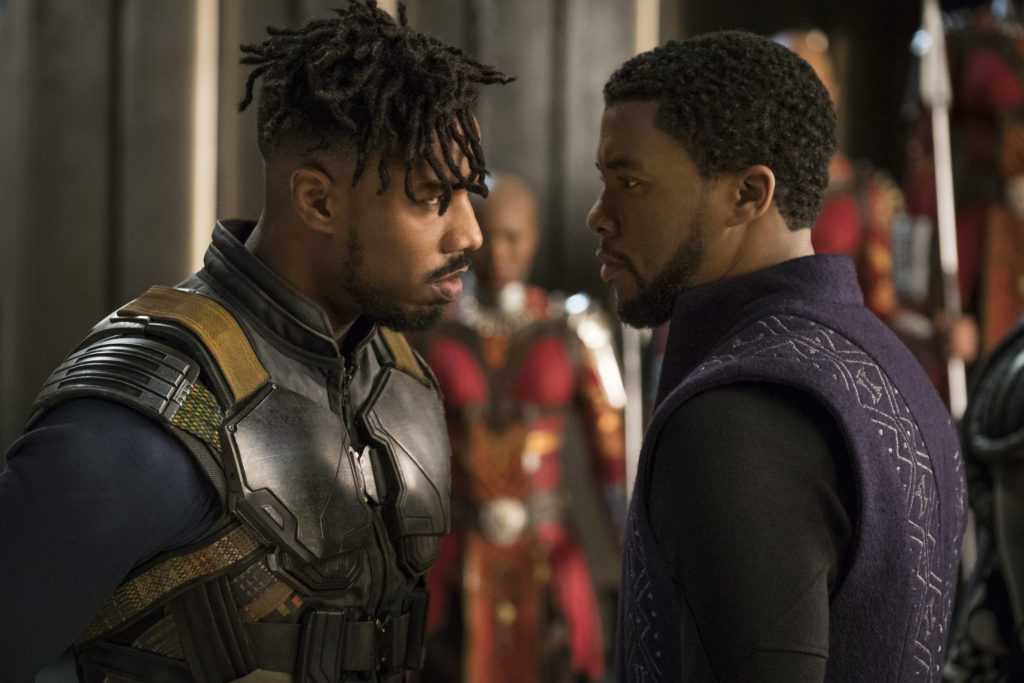Home is a place that you want to protect; it’s a place that you want to see thrive. If your resources in your locality can help other lands thrive, would you act upon that? Or would you think about how those other homes, in the distant past, have colonized and taken from other foreign communities?
Director Ryan Coogler takes the audience on a different path than Marvel Studios has shown us before. With his newest superhero film, “Black Panther,” Chadwick Boseman assumes the mantle of King T’Challa, Black Panther, as we see him become a new and rising king of a country called Wakanda. Wakanda is veiled by their rare resource known as vibranium, a naturally occuring meteoric ore with energy-manipulating qualities.
The fictitious nation that Black Panther oversees can, at this moment in time, help other countries progress in diplomacy and technology using their precious metal material. His worry with this is that the past has shown that the outside world can be cruel and violent towards one another, and he doesn’t want to see his home crumble in the process of extending aid.
I couldn’t believe my eyes when I watched the camera fly over Wakanda. I’ve only seen drawings and sketches of T’Challa’s home in comic books, so witnessing Coogler and his team copying and pasting Wakanda straight from the comics to the silver screen was a moment that I will never forget, especially when digital copies of “Black Panther” are available.
In 1966, King T’Challa, also known as Black Panther, made his debut in “Fantastic Four Vol. 1 #52,” combating the racist tropes that were given to people of color at the time by the rest of society and empowering the black community using pop culture as a vessel. Appropriately, the majority of the cast members that Coogler sought for his Marvel film were Black.
A collaborative effort went into making “Black Panther” and bringing fictional African nation Wakanda to life. However, Coogler’s choice to bring back the production designer Hannah Beachler, who worked with Coogler on “Creed” and “Fruitvale Station,” to help generate this dream-like and beautiful African nation was indispensable. The final product proved that their partnership continues to be strong.
Not only did Beachler helm the design of this production but Oscar nominated cinematographer Rachel Morrison was on board to add to the quality of “Black Panther”’s construction of T’Challa’s colorful home. Morrison’s work on both Marvel’s film and “Mudbound” has made it clear that her nomination for best cinematography category for the Academy Awards this year, an all male driven category, will change the game in photography direction from here on out.
I want to visit the world these talented women, along with the rest of the production cast, have created. Their visual storytelling added tremendous value to “Black Panther”’s well deserved high praise from the bulk of critics.
“Black Panther” showed me the vision I had as a kid when thinking about a superhero protecting their home. Boseman made his appearance as Black Panther in “Captain America: Civil War” and he shined there, but his solo film provided a more thoughtful role for the veteran actor. This film allowed Boseman to portray a struggling king trying to balance his nation’s safety while doing his duty to help keep the world at bay.
Like all of Boseman’s performances, he killed it as The Avengers’ Wakandan superhero.
I believe “Black Panther” is not only one of Marvel Studios’ best films, but it’s also 2018’s “Get Out” — this film is culturally important for putting black women and men in the spotlight and showcasing their struggles and celebrations.
Most importantly, Black Panther has been linked to strong Civil Rights movements throughout US history.
As Hollywood Reporter reports, the popular belief of the Marvel character being named after the Black Panther political party, which is incorrect as T’Challa was actually founded two months before the rise of the Black Panther Party. Changes to the superhero’s name were made but that didn’t stick around for too long, thus the title Black Panther was kept.
This correlation seemed fitting for the film’s portrayal of Oakland in 1992, seeing as the Black Panther Party was founded there. The spot-on details astounded me, from seeing the correct year’s Oakland Athletics uniform to what happy and tragic events in Oak Town’s streets were like. I have never been more proud of the Bay Area in Marvel comics, beating out Ant-Man’s base of operations in San Francisco. I also recommend listening to the “Black Panther” album which includes Vallejo, Calif. hip-hop group SOB x RBE.
Marvel has made one of their most polished gems with “Black Panther.” They’ve helped me understand a beautiful culture from a different point of view, while also keeping their Marvel formula of a superhero rising up to face their personal demons and the villainous antagonist.
As the Wakandans would say, “n’cos” (thank you), Marvel, for the “birnin” (city) and “Damisa-Sarki” (The Panther).







